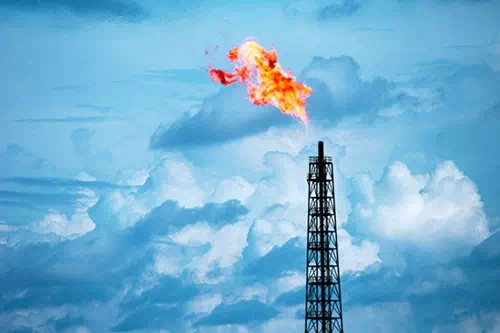

|
General Duty Clause (Section 112(r)) and Chemical Accident Prevention Provisions (40 CFR Part 68) Overview There have been well-documented air quality impacts in areas with active natural gas development, with increases in emissions of methane, volatile organic compounds (VOCs) and hazardous air pollutants (HAPs). In fact, inspectors in EPA Region 6, using infra-red technology which allows enforcement officers to see emissions that are otherwise not visible to the human-eye, have identified numerous emissions of hazardous air pollutants from poorly maintained or open storage tanks. The General Duty Clause and Risk Management Program requirements were used to issue enforcement citations to address unpermitted oil and gas air releases. General Duty Clause The General Duty Clause (GDC) CAA Section 112(r)(1), directs owners and operators of stationary sources to identify hazards that may result from accidental releases, to design and maintain a safe facility, and to minimize the consequences of releases when they occur. The general duty clause applies to owners and operators of stationary sources producing, processing, handling or storing any regulated substance or other extremely hazardous substances. The CAA 112(r) program is designed to prevent accidental releases of chemicals through a program of preparedness, response and prevention. Here are several important terms associated with this program.
It is important to note that there is no specific list of substances which subject a stationary source owner or operator to the GDC provisions. More importantly, extremely hazardous substances are not limited to either the list of regulated substances listed under CAA Section 112(r), or the extremely hazardous substances under EPCRA Section 302 (40 CFR Part 355, Appendices A and B). Reference sources which may be used to establish that a substance may be a General Duty Clause extremely hazardous substance include:
Facilities subject to the General Duty Clause are, among other things, responsible for the following:
Generally, among other things, the General Duty Clause involves:
Risk Management Plan Clean Air Act Section 112(r) also establishes the Chemical Accident Prevention Program dedicated to recognizing hazards and preventing accidents (CAA Section 112(r)(7) and 40 CFR Part 68). It differs from the General Duty Clause in that it requires facilities that use listed toxic or flammable chemicals above certain thresholds (see 40 CFR Part 68.130) to implement a specified set of accident prevention and emergency response program elements, and to submit a document called the Risk Management Plan (RMP) to EPA. An RMP includes the following minimum elements (depending on the program level of the facility, the plan will include more elements):
States may run the 40 CFR Part 68 program based on EPA's delegation authority; to date, nine states implement the program. The GDC cannot be delegated to the states. More Information 40 CFR Section 68.130. List of substances. General Duty Clause. EPA fact sheet explaining the General Duty Clause, which makes the owners and operators of facilities that have regulated and other extremely hazardous substances responsible for ensuring that their chemicals are managed safely. General Guidance on Risk Management Program for Chemical Accident Prevention (40 CFR Part 68) (EPA). Information on regulatory coverage. Is there software to help me report RMP? (EPA). RMP*eSubmit. EPA provided software for facilities to use for online RMP reporting. What is a Risk Management Plan? (EPA). Risk Management Plans Under CAA 112(r). Risk Management Plan. EPA fact sheet covering RMP requirements under the Clean Air Act Amendments of 1990, Section 112r. What is the General Duty Clause? (NCDAQ). General Duty Clause fact sheet (June 1999). Where can I find the list of Extremely Hazardous Substances? (EPA). List of Lists, Consolidated List of Chemicals Subject to the Emergency Planning and Community Right-to-Know Act (EPCRA) and Section 112(r) of the Clean Air Act.
|